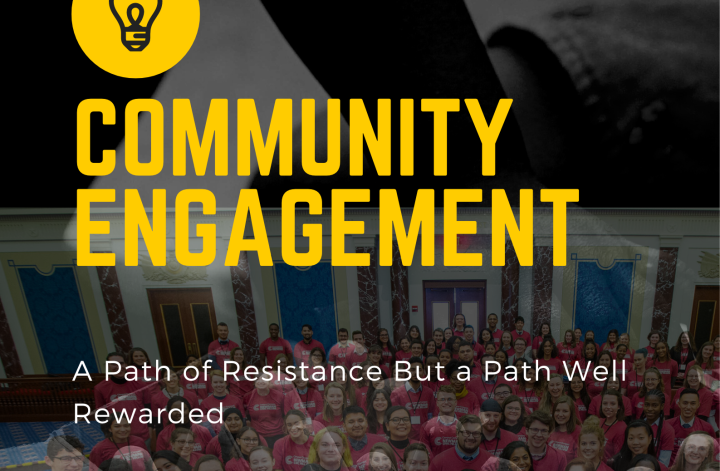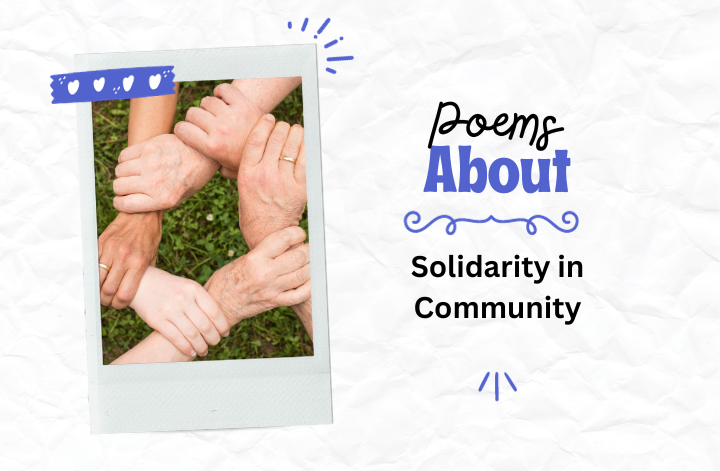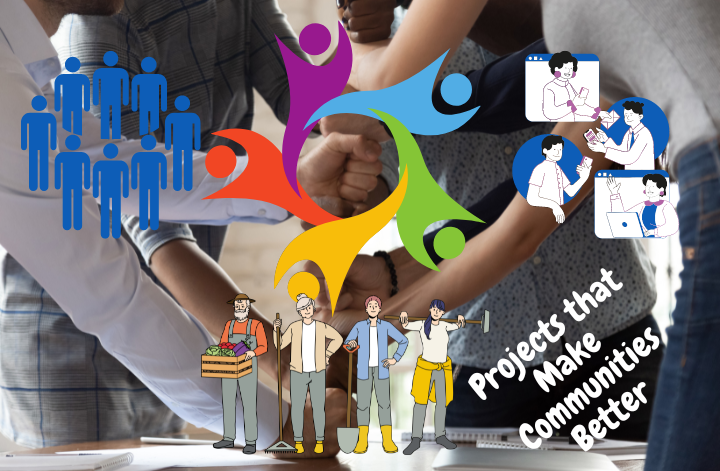Engaging a community to bring positive change in your surroundings is no easy job. You need to be extremely resilient in order to have a meaningful impact in any community engagement initiative. But this doesn’t mean that you should get discouraged even before starting the community engagement drives. It’s just that you should have a fair amount of expectations of what’s coming up so you are well prepared for it.
Community engagement has numerous benefits including improved lifestyles, social cohesion, economic development, and knowledge sharing. But these initiatives have their own challenges including resistance to the status quo, lack of trust among stakeholders, difficulties in incorporating diversity, and others.

Let’s see the challenges and benefits of community engagement.
Challenges of Community Engagement
Here are the most prominent challenges you might face during any community engagement initiative.
Overcoming apathy and resistance
Whenever you try to engage any community, you will find a lot of resistance from the status quo. There is a reason why an overwhelming amount of people are resistant to change. This resistance allows them to side with the status quo and curb any voice that can lead the community towards new beginnings.
Some of the prominent reasons why people are resistant towards community engagement are:
- Lack of trust on the leaders of the change.
- Communication barriers with the stakeholders of the cause.
- Their association with powerful elements of the society that are negating the change.
Whether you look in the historical context or see the current events of the world, you will find this type of resistance.
See this real life example of this resistance.
I worked in a non-profit organization which proposed a new program to provide job training and placement services to individuals experiencing homelessness.
The NGO was clear in its mission: to start a community engagement drive that could help the homeless people. However, the program was met with resistance from some community members who argued that it would attract more homeless individuals to the area, and that the non-profit should focus on addressing the root causes of homelessness instead. At the end of the day, the NGO was forced to change the location of their training institute.
Building trust Among Community Members
Establishing trust between community members and organizers is essential for successful engagement. But this is easier said than done. Building rapport and trust is challenging in communities with a history of conflict or mistrust, requiring time and effort to create a safe and inclusive environment.
I had a friend who was engaged in starting a new charity avenue in areas where clean drinking water facilities were not available. Though the cause was noble and should have been treated with much regard, community stakeholders started questioning his credentials.
With a Chemical Engineering degree in his hand, my friend had extensive experience in dealing with water filtration technologies. But most important stakeholders of the community did not engage with him until he invited them to visit other such projects that were installed in other parts of the country.

Difficulty in Incorporating Diverse Cultures
Diversity is a good thing and we all agree to that. But in case of community engagement, this diversity can become a headache, and for all the right reasons. During any community engagement initiative, you will find individuals standing from a specific culture that they are not incorporated well in the change. Many sub groups within the community also complain that they are not onboard with the change or that they can suffer from the social, cultural and economic implications of the change.
While this is a problem you must worry about, there is a simple solution to that. You need to have a leader from every subgroup of the community that could represent them and address the issues related to that subgroup. This way you can incorporate multiple voices in the community engagement which will help you in making a meaningful impact in the society.
Time and resource constraints
Community engagement often requires significant time and resources, which can be a challenge for organizers and participants alike. For example you will need dedicated personnel, funding, logistical support, campaign software and all the needed material that may come in handy for the community engagement.
But not everyone has the amount of money needed to drive a successful community drive. This is where fundraising comes in. In fact, most community engagement drives are only made possible with fundraising since not most people are willing to spend all of their bank balance on the community engagement drive.
And even if the fundraising problem is solved or every member of the community is willing to spend some amount of money on the community initiative, you will find people backing off due to lack of time.
Measuring impact of the Change
If you have ever started a community engagement initiative, you would have probably heard what are the odds of your success. How will you measure the efficacy of your initiative, and how will you know that you are doing the right thing? Well, this is not to demotivate you but this is absolutely true.
Measuring the success of community engagement is hard, especially when you don’t have a highly actionable plan. This is why we recommend that you have all the Key Performance Indicators (KPIs) that you can use in order to measure the outcome of your specific actions.
It is important that you are measuring the impact of each and every action as it will allow you to see what works and what doesn’t.
Conflict and disagreement Resolution Mechanism
In any collaborative process, differences of opinion are bound to arise. However, unresolved conflicts and disagreements can impede progress and erode trust among community members and organizations.
Effectively managing conflict requires open communication, active listening, empathy, and a willingness to compromise. By addressing disagreements constructively, community engagement efforts can continue to move forward and foster stronger relationships.
This means that you must develop an effective crisis resolution mechanism that could help you in evading conflict and disagreement during the community engagement programs.
Benefits Of Community Engagement
Despite huge challenges of community engagement, there are a lot of benefits associated with it given below.
Community Engagement Changes Dysfunctional Society
The very reason to engage any community is to bring change in the dysfunctional part of the society. So community engagement always helps to raise the life standards of the rather disadvantaged people of the society. I have taken part in many community engagement initiatives myself working with teams spanning hundreds of members. And we always had one goal in mind: to bring change that could raise the life standards of the people for the rest of their lives.
Improved public services
Community engagement is also aimed at improving the efficiency of public services. And when you involve community members in the design, delivery, and evaluation of public services, you end up improving the delivery of public service initiatives that help people in reaping more benefits out of the system.
Enhanced social cohesion of Communities
People of any community feel connected when they get to spend time with each other. Even though communities are getting more disconnected from one another in the modern times, people have an inherited need of getting recognized in the form of communities. Without connecting to each other, individuals can feel alienated.
So when you engage with diverse members of a community it helps individuals to break down social barriers, promote understanding, and foster a sense of belonging. This strengthens social cohesion and contributes to a more harmonious and resilient community.

Empowerment and self-determination
Community engagement initiatives empower individuals and groups to have a voice in the decision-making process. This enhances their sense of ownership and responsibility, leading to more sustainable outcomes.
Community engagement helps in empowerment and self determination of societies in the following ways:
- Building social capital in society
- Encouraging collective action among individuals
- Developing skills and knowledge in members of the community
- Fostering a sense of belonging among participants
- Creating opportunities for civic participation
- Nurturing resilience of socially active individuals
Knowledge sharing and capacity building of Communities
Community engagement facilitates the exchange of ideas, skills, and expertise, leading to increased capacity and resilience within the community. I will give you my own example here. I am a digital creator now, but I wasn’t always like this. I explored this side of my personality when my community members realized that I have an in-built trait of teaching others. So, I decided to give myself a go in this field, and built an online community where I teach people about civic engagement.
Knowledge sharing also helps to identify local assets and resources that can be leveraged to address community challenges.
Economic development of the Disadvantaged Community
Engaging with local businesses, entrepreneurs, and stakeholders always increases economic growth and job creation within the community. By working together, community members can identify opportunities for development and investment, resulting in a more vibrant and prosperous community.
Final Thoughts
This is true that community engagement presents a lot of challenges. But this is the case in each and every field, isn’t it? Look at the bigger picture. How can you change the community once you start an initiative that will bring positive change in the lives of hundreds of thousands of people?
Once you realize this, it’s easy to overcome the challenges associated with community engagement.



